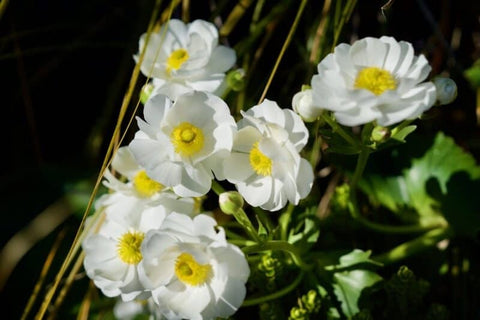As the temperatures drop and frost blankets the ground, it might seem like your gardening season has come to an end. However, with the right strategies and a bit of planning, you can extend your growing season well into the winter months. Winter gardening in raised beds is not only possible but can yield a bounty of cold-hardy crops. In this blog, we'll explore tips and processes for successful winter gardening, allowing you to enjoy fresh produce even when snow is on the ground.The following content also has some reference value for raised garden beds.
Choosing the Right Crops

Before you dive into winter gardening, it's essential to select the right crops that can withstand the cold. Some of the best options for winter gardening in raised beds include:
- Root Vegetables: Carrots, beets, turnips, and parsnips are excellent choices. They can remain in the soil and be harvested whenever necessary.
- Leafy Greens: Spinach, kale, Swiss chard, and various lettuce varieties thrive in colder temperatures.
- Brassicas: Broccoli, Brussels sprouts, cauliflower, and cabbage are cold-hardy and become sweeter after a frost.
- Alliums: Onions, garlic, and shallots can be planted in the fall and harvested the following summer.
- Herbs: Some herbs like parsley, chives, and cilantro can survive the winter when protected.
Prepping Your Raised Beds

To get your raised beds ready for winter gardening, follow these steps:
- Clear the Debris
Remove any remaining summer crops and garden debris, creating a clean slate for your winter garden.
- Amend the Soil
Add a layer of compost to enrich the soil with nutrients. Raised beds tend to drain faster, so amending the soil helps retain moisture.
- Mulch
Apply a thick layer of mulch to insulate the soil, regulate temperature, and protect your crops from frost.
- Protect Against Frost
Protecting your winter crops from frost is essential. Here are a few methods to keep your garden safe:
- Row Covers: Floating row covers made from fabric or plastic can provide a barrier against frost while allowing sunlight and air circulation.
- Cold Frames: Cold frames are mini-greenhouses that can be placed over your raised beds to create a warm and protected environment for your plants.
- Cloches: Bell-shaped glass or plastic cloches can be placed over individual plants to shield them from frost.
- Blankets and Sheets: In a pinch, old blankets, bed sheets, or burlap can be used to cover plants overnight to prevent frost damage.
Winter Watering
It's crucial to monitor your garden's water needs during the winter. While you'll likely water less frequently than in the summer, don't forget about your plants entirely. Water deeply on days when the soil is not frozen to ensure your crops have access to moisture.

Pest Management
While many pests go dormant in the winter, some may still pose a threat to your garden. Keep an eye out for aphids, slugs, and other cold-tolerant pests. You can use organic pest control methods to manage them without chemicals.
Harvesting
Depending on your climate and the specific crops you're growing, you can harvest throughout the winter. Root vegetables like carrots and beets can be left on the ground until you're ready to use them. Leafy greens and brassicas can be harvested as needed.
Planning Ahead for Spring
Winter gardening in raised beds is not just about the cold season. It's an opportunity to get a head start on your spring garden. Consider planting early spring crops in late winter, so they'll be ready to flourish as soon as the weather warms.
Conclusion

Winter gardening in raised beds is a rewarding and sustainable way to enjoy fresh produce throughout the colder months. With careful crop selection, preparation, and protection, you can maintain a bountiful garden even when the ground is frozen. Embrace the opportunities that winter gardening offers and you'll discover the joy of harvesting homegrown vegetables while the snow falls outside.









